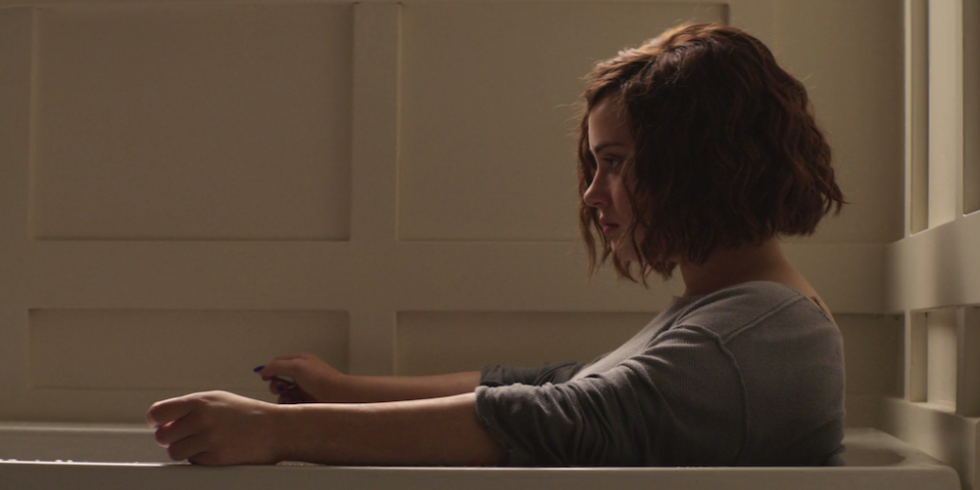Suicide is always a sensitive matter, and things get even more complicated when you factor in journalism, and how to broadcast it to the whole world. It is a careful balance between how you act, show and display it in the world of suicide journalism.

What is Suicide Journalism?
Suicide Journalism is the act of reporting suicides, and while in the process of reporting events in Australia, they keep to standards set by the Australian Press Council (APC) and the Australian Communications Authority (ACMA) . Covering suicide is a sensitive topic and reporting a serious mental health incident in the media is best to prevent even more suicides from happening. It’s a tricky topic that Journalists have to approach with caution.
Why are there rules for Suicide Journalism?
There are rules for suicide journalism because there is evidence that making a suicide public can lead to a mass of copycat suicides; commonly called a suicide contagion. This phenomenon was first acknowledged in “The Sorrows of Young Werther”, a book published by Wolfgang Von Goethe, where young men saw how Werther committed suicide in the book and started emulating the method of death. This caused suicides to spike, as the phenomenon was also reported in newspapers across the country. It was only when the book was banned, and newspapers stopped reporting it that the suicide rates dropped down. This serves as an example of the effect that a suicide contagion has. After the suicide of celebrity figures, such as Anthony Bourdain, rates are reported to spike, and can harm even more vulnerable people if it is reported/ shown incorrectly. Some of the standards include balancing public interest with their readers, getting consent from close parties to report the suicide, or making sure that the article doesn’t offend anyone. If these rules aren’t heeded, it can lead to a bigger suicide contagion.
Case Study of Bad Ethics: 13 Reasons Why

A good example of this phenomenon is the Netflix Original Show 13 Reasons Why. Although a fictional show, it is popular with the younger audience of teens and tweens and hits many of the benchmarks for inaccurate and dangerous reporting/viewing of suicide. 13 Reasons Why follows the story of the recently deceased protagonist, Hannah, who gives 13 tapes to different people who are responsible in some way for her suicide. The show has a confronting suicide scene on the last episode of the show, where Hannah is physically seen in the bathtub, slitting her wrists as blood comes out. This scene was intended to be graphic to ‘shock’ viewers, as it was a drama series, and it did. The problem it raises that it is the exact opposite of the recommended action to take when showing graphic suicides. According to ACMA, showing the actual suicide can make people with depression even more unstable and confused, and the recommended way to show it is not showing any graphic details at all.
The APC recommends that they ‘balance the public interest with the sensibilities of their readers, particularly when the material, such as photographs or videos, could reasonably be expected to cause offence’. The scene was graphic and could have definitely caused offense and shock to people watching the show. Also using non-sensationalistic descriptions to describe the death, can help mitigate suicides. However, the show took the route to make Hannah out to be the martyr. One of the faults of the show was that suicide is assumed to be a cause-and-effect action, when it can in fact come from of a number of issues, such as biochemical, genetic or even personality. In the show it is portrayed as the other people’s ‘fault’, when it is something an individual person decides for themselves.

The shows questionable take on suicide and grief has led to suicide rates spiking after the airing of the show in April with the 10-17 age demographic experiencing the highest suicide rate in the past 5 years and has only kept rising. The suicide rates in April can possibly be associated with the ending of 13 Reasons Why and have caused a suicide contagion among the youth due to its popularity.
How to Report Suicides Ethically

There are recommendations from Industry Guidelines and Mental Health Professionals that give specific instruction on how to report on suicides.
From the APC and ACMA we have guidelines that tell journalists to-
- Report it ethically so that the public can benefit from learning about the suicide
- The death is clearly in the public interest
- No authority has withheld reporting to prevent further incidents
- Reports should not sensationalise, glamorise or trivialise suicides.
- Have sensitivity and moderation in reporting/ showing suicide
- Excluding details about death, method used or location.
- Should be accompanied by helplines and 24-hour crisis line information.
- Use words like “non-fatal” rather than “unsuccessful” and “increasing rates” rather than “suicide epidemic” to describe an attempt.
- Don’t use derogatory terminology like “cracked up” or “psycho” that perpetuate discrimination and use medical terms with proper context
From Mental Health Professionals we have recommendations to-
- Talk about their life, not death
- Use neutral photos and passive voice
- Look at context for the story if you’re reporting it
- Include information of warning signs of suicide
- Don’t assume correlation and causation for death
Afterthoughts of Ethical Reporting
Looking at this list, we can see that 13 Reasons Why clearly did not pass industry guidelines for reporting or showing suicide. It is very likely that the final episode of 13 Reasons Why would not be allowed to be shown on Australian TV. The mandatory 24-hour crisis line would also have to be shown at the end of each episode, which is what the show did not do and only included a warning about the themes and content on the first episode. They also showed explicit details on the method of death, as well as showing the impact. Another disturbing facet is that it also glamourizes suicide- by leaving the impression that people left behind would remember her legacy and change their ways.
Ethical suicide reporting and TV show standards set by ACMA on Australian TV would allow none of this- and the practical implications for this are very clear, to reduce the rise of suicide contagion and lessen the potential deaths to vulnerable people.
If you need help, an Australian suicide prevention hotline is here 24/7-
13 11 14

You must be logged in to post a comment.